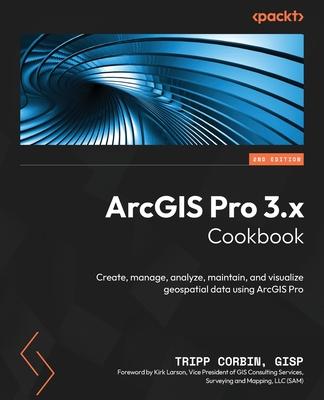Leverage the powerful tools in Esri's ArcGIS Pro to perform geospatial analysis
Key Features- Harness the power of ArcGIS Pro to build informative maps showcasing your GIS dataAnalyze geospatial data through proximity, spatial statistics, and hotspot analysisIncrease data entry efficiency and quality with advanced geodatabase behaviorPurchase of the print or Kindle book includes a free PDF eBook
ArcGIS Pro, Esri's newest desktop GIS application, offers powerful tools for visualizing, maintaining, and analyzing data. This cookbook will help existing ArcMap users transition to ArcGIS Pro and teach new users how to utilize its GIS tools effectively. You'll learn how to create geodatabases, convert data formats, link tables from outside sources, edit 2D and 3D data, ensure data integrity with topology, and enable advanced geodatabase behavior. By the end, you'll be able to effectively use ArcGIS Pro as your primary desktop GIS application, maintaining, analyzing, and displaying data using common methods and tools.
What you will learn- Navigate the new ArcGIS Pro ribbon interfaceCreate and publish 2D and 3D mapsEdit data using standard tools and topologyLink data together using joins, relates, and relationship classesCreate a new geodatabase and validate data using domains, subtypes, attribute rules, and contingent valuesConvert data formats and project data to new coordinate systemsPerform proximity analysis and map clusters with hotspot analysisConduct advanced 3D analysis with 3D Analyst extension
This book is for GIS professionals, architects, specialists, analysts, and technicians looking to learn how to use ArcGIS Pro and the powerful data editing, analysis, and creation tools it offers. Those who are just getting started with ArcGIS Pro and wish to expand their skills, as well as those who want to migrate to this platform will also find this book helpful. While some basic GIS experience is helpful, it's not a prerequisite.
Table of Contents- ArcGIS Pro Capabilities and TerminologyAdding and Configuring Layers to a MapLinking Data TogetherEditing Exisiting Spatial FeaturesCreating new Spatial dataEditing Tabular DataProjections and Coordinate System Basics
(N.B. Please use the Read Sample option to see further chapters)
